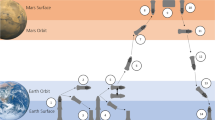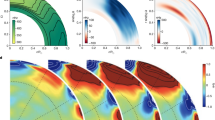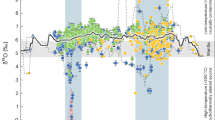Abstract
AT the meeting of the Royal Astronomical Society on January 9, 1970, I drew attention to some mathematical and numerical errors in a theoretical discussion by S. K. Runcorn of his proposed mode of development of an iron-core for the Earth1 which he regards as providing strong support for his hypothesis of continental drift. Runcorn has recently defended his theory2, but the proffered justifications involve serious confusion of the dubiously known physical properties of the actual Earth with the completely known details of the hypothetical problem that he has enunciated and must have in some way precisely defined in order to make it the subject of machine calculations. It is against the validity and correctness of the mathematical steps that he claims to have made that my criticisms have been lodged. The points at issue are not controversial but simply a question of whether or not mathematical errors have been made, matters upon which there can ultimately be no serious ground for sustained disagreement.
This is a preview of subscription content, access via your institution
Access options
Subscribe to this journal
Receive 51 print issues and online access
$199.00 per year
only $3.90 per issue
Buy this article
- Purchase on Springer Link
- Instant access to full article PDF
Prices may be subject to local taxes which are calculated during checkout
Similar content being viewed by others
References
Phil. Tram. Roy. Soc. A., 258, 245 (1965).
The Observatory, 91, 164 (1971).
Author information
Authors and Affiliations
Rights and permissions
About this article
Cite this article
LYTTLETON, R. The Solution to Professor Runcorn's Problem. Nature 240, 459–460 (1972). https://doi.org/10.1038/240459a0
Received:
Issue Date:
DOI: https://doi.org/10.1038/240459a0
This article is cited by
-
The Geophysical Consequences of Professor Lyttleton
Nature (1973)
Comments
By submitting a comment you agree to abide by our Terms and Community Guidelines. If you find something abusive or that does not comply with our terms or guidelines please flag it as inappropriate.



